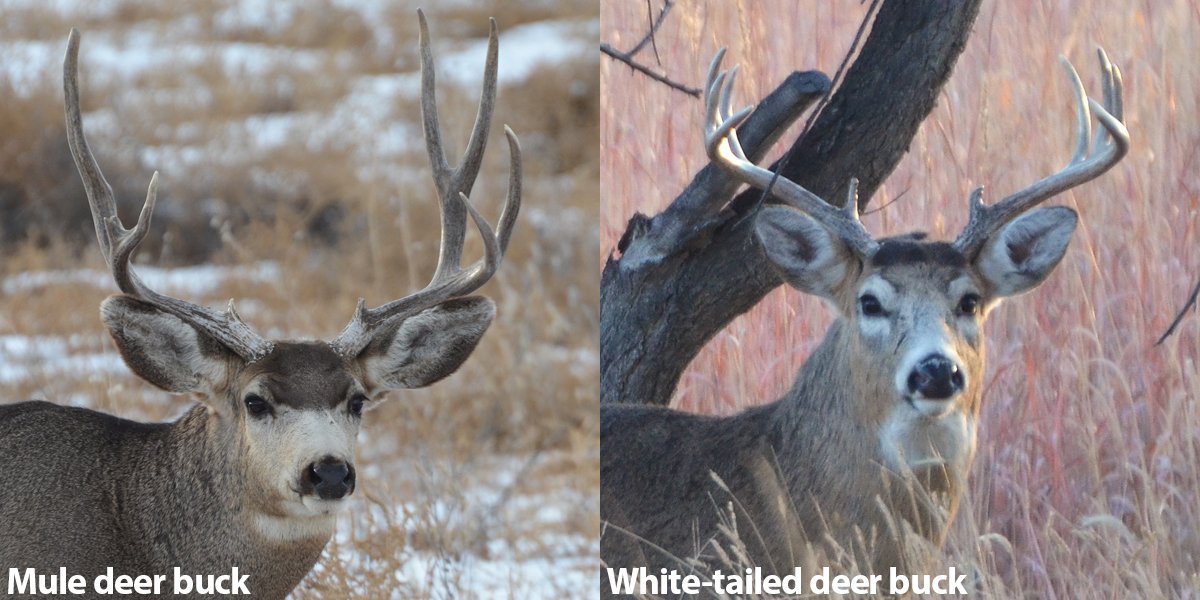Mule deer and whitetail are two iconic deer species with distinct characteristics. Mule deer, known for their large ears and impressive leaping ability, prefer open, rugged terrain. On the other hand, the elusive whitetail is recognized by its graceful, white-tipped tail and preference for dense forests. Understanding the differences between mule deer vs whitetail is essential for any hunting enthusiast. Let’s delve into their unique traits, habitats, and behavior to uncover the secrets of these magnificent creatures.
Mule Deer vs Whitetail: A Detailed Comparison
Mule Deer vs Whitetail: Understanding the Differences
Welcome to our comprehensive guide on mule deer and whitetail deer! While both belonging to the deer family,
these two species have distinct characteristics that set them apart. Let’s dive in and explore the
fascinating world of mule deer versus whitetail deer.
Mule Deer: The Majestic Wanderers
Mule deer, also known as Odocoileus hemionus, are natives of western North America. They are named for their
large ears that resemble those of a mule. These deer are known for their impressive agility and the ability
to traverse rugged terrains with ease.
Physical Characteristics of Mule Deer
One of the key features of mule deer is their size. They are generally larger than whitetail deer, with
mature bucks weighing between 150 to 300 pounds. Mule deer also have distinct black-tipped tails and
antlers that fork rather than branch.
Habitat and Behavior of Mule Deer
Mule deer prefer habitats that offer a mix of open grasslands and dense forests. They are known to be
solitary creatures, although they may form small groups during the winter months for protection against
predators.
Whitetail Deer: The Graceful Sprinters
Whitetail deer, scientifically known as Odocoileus virginianus, are widespread across North and South America.
These deer are named for the white underside of their tails, which they flash as a warning signal when
alarmed.
Physical Characteristics of Whitetail Deer
Compared to mule deer, whitetails are smaller in size, with bucks weighing between 130 to 250 pounds on
average. They have tails that are predominantly white on the underside, which is visible when they raise
it in alert.
Habitat and Behavior of Whitetail Deer
Whitetail deer are highly adaptable and can thrive in a variety of environments, including forests, grasslands,
and even suburban areas. They are social animals and often live in groups, known as herds, particularly
during the breeding season.
Diet and Feeding Habits
Both mule deer and whitetail deer are herbivores, meaning they primarily feed on plants and vegetation. However,
their specific diets may vary based on their habitats and seasonal food availability.
Mule Deer Diet
Mule deer have a diverse diet that includes grasses, shrubs, leaves, and even fruits when available. During
the winter months, they may rely on woody browse to sustain themselves when other food sources are scarce.
Whitetail Deer Diet
Whitetail deer are known to be browsers and feed on a variety of plants, including leaves, twigs, fruits,
and nuts. They are opportunistic feeders and can adapt their diet based on the season and food availability
in their environment.
Reproduction and Life Cycle
Understanding the reproductive patterns and life cycles of mule deer and whitetail deer can provide insights
into their behaviors and population dynamics.
Mule Deer Reproduction
Mule deer typically breed in the fall, with males competing for the attention of females by displaying their
antlers and engaging in vocalizations. The gestation period for mule deer is around 200 days, and females
usually give birth to one or two fawns in the spring.
Whitetail Deer Reproduction
Whitetail deer also mate in the fall, with dominant bucks establishing their territories and engaging in
vocal displays to attract does. The gestation period for whitetail deer is similar to mule deer, lasting
around 200 days, and females typically give birth to one to three fawns in late spring or early summer.
In conclusion, mule deer and whitetail deer are two fascinating species of deer that exhibit distinct
characteristics in terms of size, behavior, and habitat preferences. While mule deer are known for their
large ears and ability to navigate rugged terrains, whitetail deer are admired for their graceful movements
and adaptability to different environments.
Whether you’re a wildlife enthusiast or simply curious about the natural world, learning about mule deer and
whitetail deer can offer valuable insights into the diversity of wildlife that surrounds us. So, next time
you’re out in nature, keep an eye out for these majestic creatures and appreciate the beauty they bring to
our ecosystems.
Identify: Mule Deer vs. White-tailed Deer
Frequently Asked Questions
What are the key physical differences between mule deer and whitetail deer?
Mule deer are generally larger in size compared to whitetail deer. They have larger ears that are proportionate to their body size, while whitetail deer have smaller ears. Additionally, mule deer have a distinctive black-tipped tail, whereas whitetail deer’s tail is white on the underside, which is visible when they are alarmed.
How do the behavior and habitat of mule deer differ from whitetail deer?
Mule deer are typically found in the western part of North America in mountainous regions, while whitetail deer are more prevalent in the eastern part of the continent and adapt well to various habitats including forests, fields, and even suburban areas. In terms of behavior, mule deer are known to be more solitary and less likely to form large herds compared to the more social whitetail deer.
What are the differences in antler characteristics between mule deer and whitetail deer?
Mule deer have bifurcated or “forked” antlers that branch into two main beams, while whitetail deer typically have single main beams that branch off into tines. The antlers of mule deer tend to be larger and more massive than those of whitetail deer, which have a more intricate tine structure.
Final Thoughts
In conclusion, mule deer and whitetail deer display distinct differences in behavior, habitat preferences, and physical characteristics. Mule deer are known for their large ears and preference for open, mountainous terrain, while whitetail deer are recognized by their white tail and preference for dense forests. Understanding these differences is crucial for effective hunting strategies and wildlife management. Whether you encounter a mule deer or a whitetail in the wild, appreciating their unique qualities adds to the richness of the outdoor experience.





